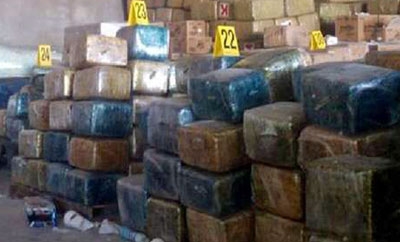Authorities in Tijuana, Mexico have seized 44 tons of marijuana, indicating that despite an increased reliance on Caribbean and Pacific drug routes traffickers continue to smuggle large quantities overland.
Acting on a federal warrant, the Mexican military and local police raided a warehouse in Tijuana on May 1, reported USA Today. They discovered around 4,000 packets of marijuana with an estimated US street value of $50 million. No arrests were made during the raid.
This seizure comes just six months after the discovery of a sophisticated drug smuggling tunnel running between Tijuana and San Diego, California. Seven other similar tunnels and large quantities of marijuana have also been discovered in San Diego since 2006.
InSight Crime Analysis
Tijuana’s proximity to San Diego makes it a strategic crossing point for drugs, and the largest quantity of marijuana ever seized in Mexico — close to 150 tons — was discovered in that city in 2010. While no arrests have been made, the most recent seizure is likely linked to the Sinaloa Cartel, which has controlled most of Tijuana’s drug trade since winning a bloody turf war against the Arellano Felix Organization, also known as the Tijuana Cartel.
SEE ALSO: Sinaloa Cartel News and Profile
Although drug traffickers are increasingly relying on maritime Caribbean and Pacific coast routes, this seizure highlights the continued importance of overland routes to criminal organizations. The warehouse was located in a neighborhood relatively far inland, indicating that the marijuana was most likely waiting to cross the land border, rather than be taken out to cross at sea.
The seizure additionally highlights the continued importance of marijuana as a source of revenue to drug traffickers. Although cocaine and methampthetamine garner much more attention, a former senior policy advisor at the White House Office of National Drug Control Policy (ONDCP) estimated in 2012 that marijuana sales made up 17 percent of US revenue for Mexican cartels. According to a US Justice Department report (pdf), potential marijuana production in Mexico increased by 113 percent between 2005 and 2010, a phenomenon attributed to decreased crop eradication.

